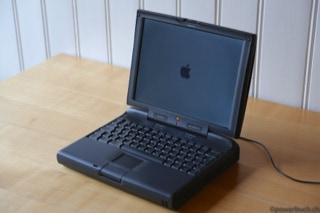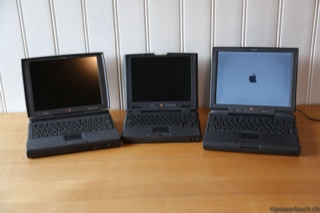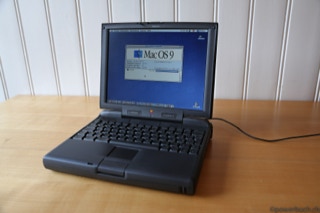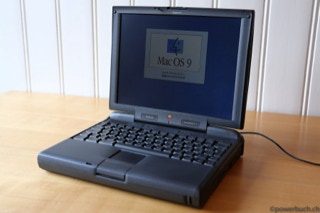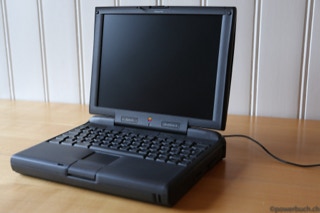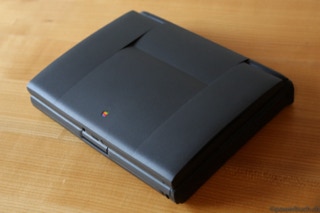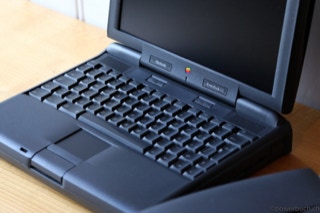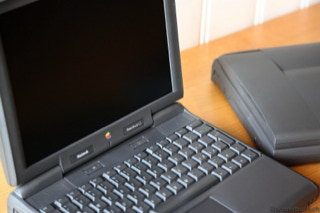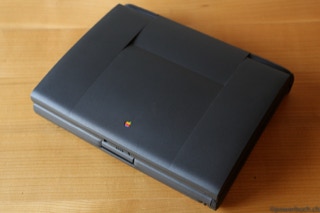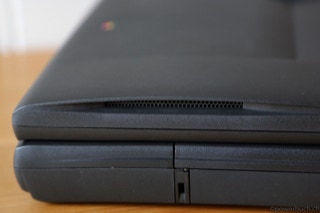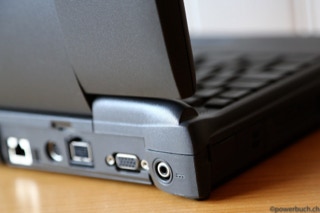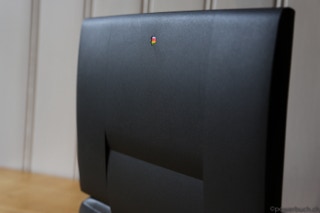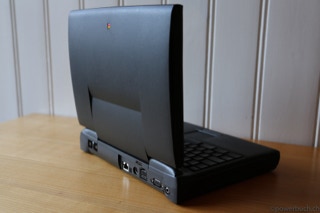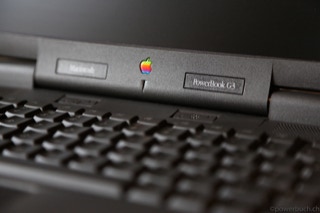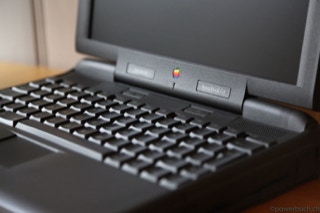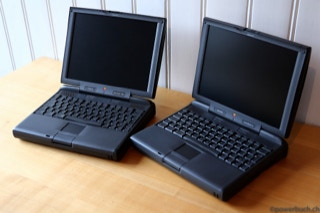Powerbook G3 Kanga (3500c)
Das Powerbook G3 Kanga wurde als schnellster verfügbarer Notebook-Computer beworben, ein Titel, den zuvor sein Vorgänger, das auf dem 240MHz PPC-603ev basierende Powerbook 3400c, inoffiziell innehatte. Das Powerbook G3 Kanga basierte auf dem Powerbook 3400c und war inoffiziell als Powerbook 3500c bekannt. Es verwendete dasselbe Gehäuse wie das 3400c und ein sehr ähnliches Motherboard. Das Motherboard wurde von 40MHz auf 50MHz hochgetaktet, was zu einer gewissen Inkompatibilität mit älteren 3400-RAM-Modulen führte. Weitere Änderungen am Motherboard umfassten eine Verdoppelung des integrierten RAM von 16 MB auf 32 MB und eine schnellere Version des integrierten Grafikcontrollers. Durch das G3 war das Kanga mehr als doppelt so schnell wie ein 3400c und der verbesserte Grafikcontroller ermöglichte eine 74 Prozent schnellere Bildschirmaktualisierung.
Es war das einzige G3-System, das nicht offiziell mit Mac OS X kompatibel war (obwohl verschiedene von Apple nicht genehmigte Methoden zur Installation von OS X verwendet werden konnten). Das Kanga war weniger als 5 Monate auf dem Markt und wurde weitgehend als Übergangslösung angesehen, die es Apple ermöglichte, das G3 Powerbook früher auszuliefern, während Apple seine revolutionärere Powerbook-G3-Serie vorbereitete. Infolgedessen hatte das Kanga die zweifelhafte Ehre, Apples Powerbook mit dem schnellsten Wertverlust zu sein. Trotzdem entschieden sich viele Leute, ein Kanga zu kaufen, um ihre austauschbaren Erweiterungsschachtmodule, Akkus und andere Peripheriegeräte der Powerbook-Modelle 190, 5300 und 3400 weiterhin zu verwenden. Das Kanga war auch in Tiefe und Breite deutlich kleiner als die nachfolgenden Wallstreet-Powerbooks, und das Kanga blieb im geöffneten Zustand das kleinste G3-Notebook bis zum Debüt des Apple iBook einige Jahre später. Das erste Powerbook G3 wurde mit einem G3-Prozessor mit 250MHz und einem 12,1-Zoll-TFT-SVGA-LCD ausgeliefert.




